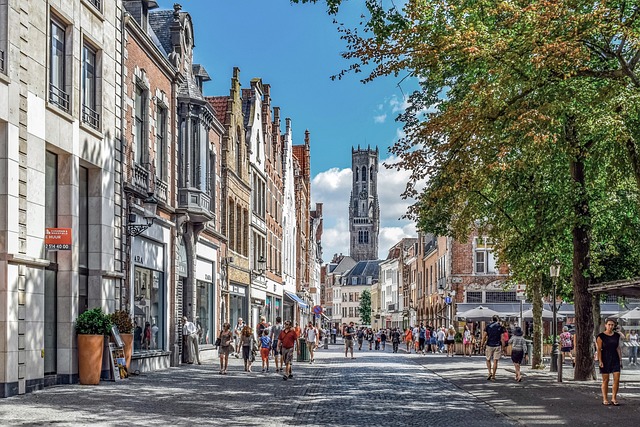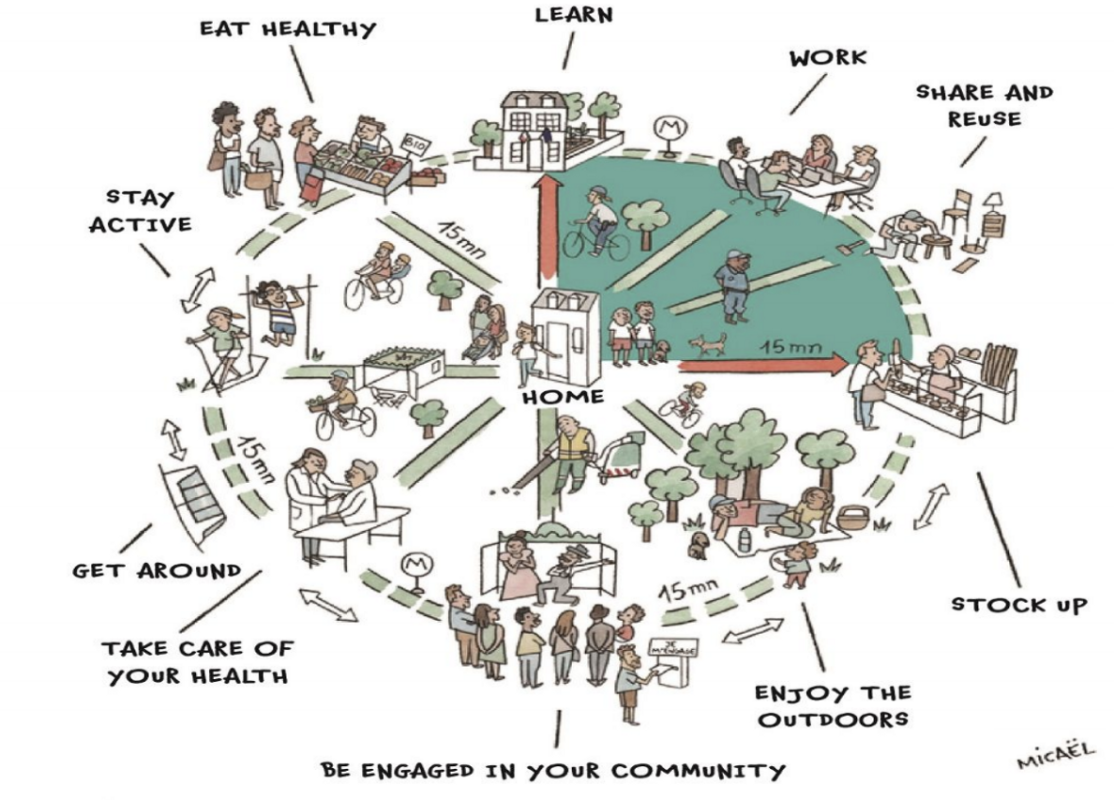 Can you imagine walking from home to work, the grocery store, or the park to meet your friends, all within 15 minutes?
Can you imagine walking from home to work, the grocery store, or the park to meet your friends, all within 15 minutes?
Cities around the world want to transition into something called 15 or “x” minute cities (the “x” stands for varying numbers of minutes).
The idea of walkable cities is nothing new, but between pandemic lockdowns and the growing climate crisis, the concept is becoming more popular.
So what are 15-minute cities? Let’s find out!
What Are 15-minute Cities?
Cities focused on the community are proven to enhance the quality of life.
The goal of 15-minute cities is to make towns more accessible to walkers, bikers, and scooters, and to cut down on driving. It’s a community where all of your needs are within walking distance. Fewer cars on the road mean less carbon released into the atmosphere. These cities help the environment and the health of their citizens. A University of Canterbury study states that the goal is to “create health-promoting cities”.
It’s unclear where the idea for 15-minute cities began, but examples are found from more than 100 years ago. The concept has become popular in the last decade, especially after the pandemic lockdowns. Paris Mayor Anne Hidalgo has made Paris more accessible to pedestrians. Since 2014, Hidalgo banned high-emission vehicles, placed mini green spaces city-wide, and added more than 30 miles (50 km) of bike paths.
Paris isn’t the only city to start implementing the 15-minute city idea; Portland, Seattle, Melbourne, and Madrid have developed similar plans.

Concept of a 15-minute city; Image credit World Economic Forum
Are There Challenges?
Many people are opposed to implementing 15-minute cities, and some even protest against it. There are discrepancies in what people with different cultural backgrounds consider necessary amenities. Other concerns include where to draw city boundaries, and how to measure the impact on rural and urban residents.
Though walkable cities sound amazing, there are challenges to widespread adoption. There are many ways to determine how long it will take to get from one place to another, and this causes confusion. Generally, the amount of minutes – the “x” in x-minute city – is the amount of time it takes to get from your home to your destination. The distance to all amenities is calculated, so the “x” depends on where you live.
According to 15minutecity.com, a project called Vision Zero – which aims to reimagine a safer transportation system for pedestrians – has been tested in several cities including San Francisco and Hoboken, New Jersey. They have had mixed results, with San Francisco seeing an increase in traffic-related deaths, and Hoboken being without a traffic-related death in over four years.
In conclusion, there’s no way to know if the 15-minute city is actually beneficial until it is widely adopted. Guardian, a U.K based news, featured letters from current residents of 15-minute cities, and many expressed approval of living near their necessities.
For now, we can only learn through trial and error how best to transition to a more sustainable society. The good thing is that countries worldwide are making conscious decisions about their climate contribution, and are looking for ways to cut emissions!
Sources: BBC, Forbes, Guardian. Washington Post, 15minutecity.com







